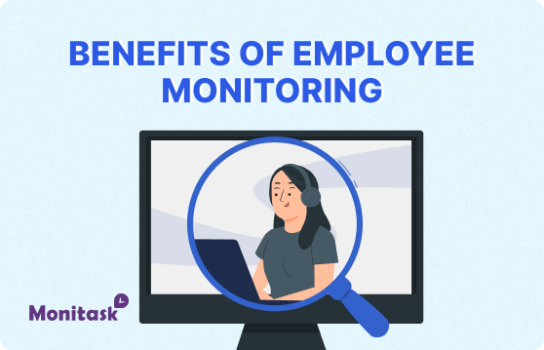What Is Workforce Utilization?
Workforce utilization measures how effectively an organization uses its employees' time and skills. It's typically expressed as a percentage of billable hours compared to total available hours. High utilization rates (70-80%) indicate efficiency, while low rates may suggest overstaffing or inefficient processes.
Workforce utilization is a critical metric in human resource management and operational efficiency. It's the measure of how effectively an organization uses its employees' time and skills to achieve business objectives. This concept is particularly important in service-based industries, consulting firms, and project-oriented businesses where employee time directly correlates with revenue and productivity.
Understanding Workforce Utilization
At its core, workforce utilization is about maximizing the value derived from your human capital. It's typically expressed as a percentage, calculated by dividing billable hours (or productive time) by total available hours. For example, if an employee works 40 hours a week and 30 of those hours are spent on billable or productive tasks, their utilization rate would be 75%.
However, it's important to note that 100% utilization is neither realistic nor desirable. Employees need time for administrative tasks, professional development, and breaks to maintain long-term productivity and job satisfaction.
Optimal utilization rates vary by industry but generally fall between 70-80%. Rates consistently above 85% may lead to burnout, while rates below 60% could indicate inefficiencies or overstaffing.
Calculating Workforce Utilization
The basic formula for workforce utilization is:
Utilization Rate = (Billable Hours / Total Available Hours) x 100
However, what constitutes "billable" or "productive" time can vary depending on the organization and industry. Some companies might include time spent on internal projects or professional development, while others strictly count client-billable hours.
Example Calculation
| Total Available Hours (per week) | 40 |
| Billable Hours | 32 |
| Non-Billable Hours (meetings, admin, etc.) | 8 |
| Utilization Rate | (32 / 40) x 100 = 80% |
Factors Affecting Workforce Utilization
Several factors can impact workforce utilization rates:
- Workload Distribution: Uneven distribution of work can lead to some employees being over-utilized while others are under-utilized.
- Skill Matching: Misalignment between employee skills and assigned tasks can result in inefficiencies.
- Project Management: Poor project planning or execution can lead to idle time or rushed work.
- Technology and Tools: Outdated or inefficient tools can hinder productivity and lower utilization rates.
- Company Culture: A culture that doesn't prioritize efficiency or allows for excessive non-productive time can impact utilization.
Industry Benchmarks
Utilization rates can vary significantly across industries. Here's a general overview:
| Industry | Typical Utilization Rate |
| Professional Services (Consulting, Law) | 70-80% |
| IT Services | 65-75% |
| Healthcare (Nurses, Doctors) | 75-85% |
| Manufacturing | 85-95% |
| Creative Agencies | 60-70% |
These benchmarks should be used as general guidelines rather than strict targets. Each organization must determine its optimal utilization rate based on its unique circumstances and goals.
Benefits of Tracking Workforce Utilization
Monitoring and optimizing workforce utilization can yield several benefits:
- Improved Profitability: Higher utilization rates often correlate with increased revenue and profitability.
- Better Resource Allocation: Understanding utilization patterns helps in more effective staffing and resource planning.
- Enhanced Employee Satisfaction: Balanced workloads can lead to higher job satisfaction and reduced burnout.
- Identification of Inefficiencies: Low utilization rates can highlight areas for process improvement or training needs.
- Data-Driven Decision Making: Utilization data provides valuable insights for strategic business decisions.
Challenges in Measuring Workforce Utilization
While workforce utilization is a valuable metric, it comes with its own set of challenges:
- Quality vs. Quantity: High utilization doesn't always equate to high-quality work. There's a risk of prioritizing billable hours over work quality.
- Employee Morale: Overemphasis on utilization can lead to stress and decreased job satisfaction if not managed carefully.
- Accuracy of Time Tracking: Reliance on self-reported time can lead to inaccuracies, especially if employees feel pressured to report high utilization.
- Variability in Work: Some roles or projects naturally have more "downtime" or non-billable work, making comparisons difficult.
A study by the Project Management Institute found that organizations with high-performing project management capabilities achieve 80% of projects on time and on budget, compared to 60% for low-performing organizations. Effective workforce utilization plays a crucial role in this performance difference. PMI Pulse of the Profession
Strategies for Improving Workforce Utilization
Improving workforce utilization requires a multi-faceted approach:
- Implement Robust Time Tracking: Use modern time tracking tools that make it easy for employees to accurately log their time.
- Optimize Project Management: Employ effective project management methodologies to ensure smooth workflow and minimize idle time.
- Invest in Training and Skill Development: Enhance employee skills to improve efficiency and expand their ability to take on diverse tasks.
- Balance Workloads: Regularly review and adjust workloads to ensure even distribution among team members.
- Set Realistic Targets: Establish utilization targets that are challenging yet achievable, considering the nature of work and industry standards.
- Foster a Productivity-Focused Culture: Encourage a culture that values productivity while also recognizing the importance of work-life balance.
Technology and Workforce Utilization
Advancements in technology have significantly impacted how organizations track and optimize workforce utilization:
- AI-Powered Analytics: Machine learning algorithms can analyze utilization data to identify patterns and predict future trends.
- Real-Time Dashboards: Modern HR systems offer real-time visibility into utilization rates, allowing for quick adjustments.
- Automated Time Tracking: Tools that automatically track application and project time can provide more accurate utilization data.
- Resource Management Software: Specialized software can help optimize resource allocation based on skills, availability, and utilization targets.
For instance, Deloitte's 2024 Global Human Capital Trends report highlights that 76% of organizations are investing in AI-powered workforce analytics tools to improve decision-making around workforce utilization and planning.
Case Study: Accenture's Approach to Workforce Utilization
Accenture, a global professional services company, has been at the forefront of optimizing workforce utilization. They've implemented a comprehensive approach that combines technology, culture, and strategic planning:
- Skills-Based Staffing: Accenture uses an AI-powered platform to match employees with projects based on their skills and availability, improving utilization and employee satisfaction.
- Flexible Work Arrangements: By offering flexible work options, Accenture has improved overall utilization by allowing employees to work when they're most productive.
- Continuous Learning: Accenture invests heavily in employee training, ensuring that their workforce remains highly skilled and adaptable, which in turn improves utilization rates.
As a result of these initiatives, Accenture reported an average utilization rate of 83% in their 2023 annual report, significantly higher than the industry average of 70-75%.
According to a 2024 survey by the Society for Human Resource Management (SHRM), organizations that effectively optimize workforce utilization report 23% higher profitability and 18% higher productivity compared to their peers. Source: SHRM Workforce Analytics Survey
The Future of Workforce Utilization
As we look ahead, several trends are shaping the future of workforce utilization:
- Gig Economy Integration: Companies are increasingly blending full-time employees with gig workers, requiring new approaches to utilization tracking and optimization.
- Focus on Outcomes: There's a shift towards measuring outcomes and value creation rather than just billable hours, especially in knowledge-based industries.
- Wellbeing Considerations: Organizations are recognizing the importance of factoring employee wellbeing into utilization strategies to ensure long-term sustainability.
- Predictive Analytics: Advanced analytics will play a bigger role in forecasting utilization needs and proactively addressing potential issues.
A recent report by McKinsey & Company suggests that by 2025, up to 30% of the workforce in developed economies could be part of the gig economy, necessitating new approaches to workforce utilization.
Conclusion
Workforce utilization remains a critical metric for organizational success, but its application is evolving. As businesses navigate an increasingly complex and dynamic work environment, the focus is shifting from simple time tracking to a more holistic view of productivity and value creation.
Successful organizations will be those that can balance high utilization rates with employee wellbeing, leverage technology for data-driven decision making, and adapt their utilization strategies to accommodate new work models. By doing so, they can ensure that their most valuable asset – their workforce – is being used effectively and sustainably to drive business success.


